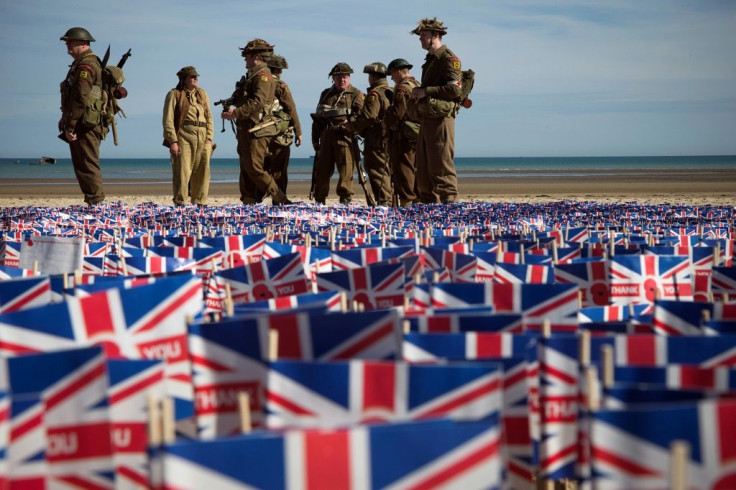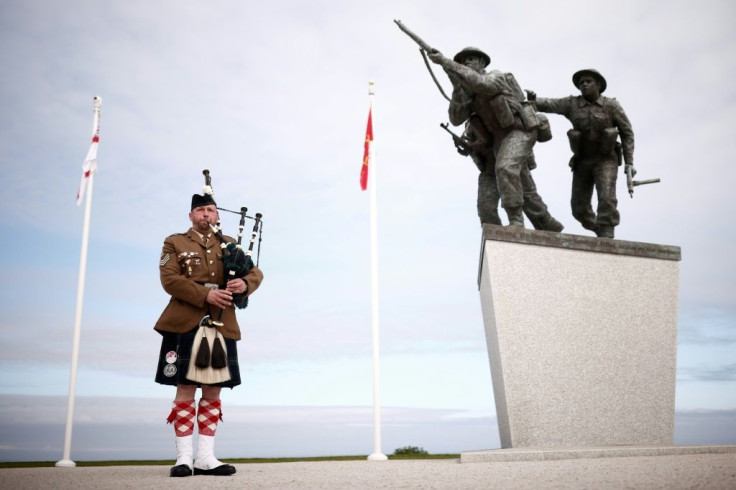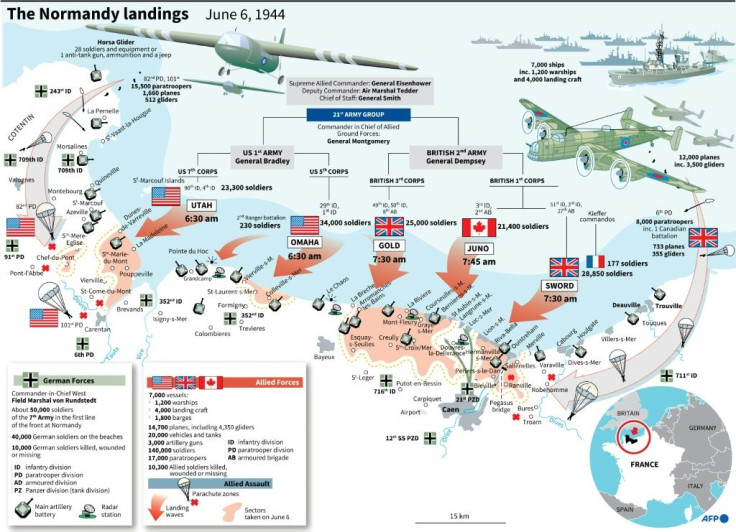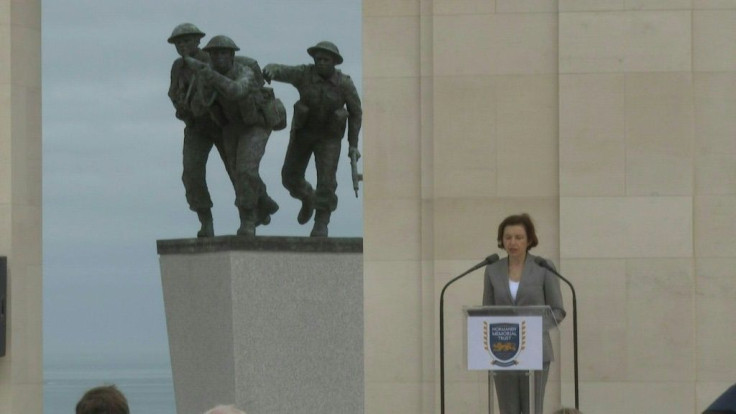British Memorial Opens In France To Remember D-Day Fallen
A memorial to almost 22,500 servicemen and women under British command killed during D-Day and subsequent battles was unveiled in northern France on Sunday, a tribute to their sacrifice seen as long overdue.
The British Normandy Memorial, inscribed with the names of 22,442 men and women who lost their lives during the invasion of Nazi-occupied France in the summer of 1944, is situated on a hillside in the Normandy village of Ver-sur-Mer.
Opened on the 77th anniversary of the landings, it overlooks Gold Beach, one of three beaches where British forces landed on the morning of June 6, 1944 to begin the liberation of Western Europe from Nazi occupation.

"It is truly a memorial fit for heroes," British Ambassador to France Ed Llewellyn told guests at the memorial in sunny weather. "A more tranquil and beautiful scene would be hard to imagine."
Llewellyn said he looked forward to visit the memorial again, "not as ambassador, but as the father of three young Franco-British children".
Covid-19 restrictions prevented British survivors from travelling to France for the event, but some 100 veterans were gathered at the National Memorial Arboretum in Staffordshire, UK, to watch the ceremony via video link.

The memorial -- built at a cost of ?33 million ($47 million) met by both the UK government and private donors -- is the first Normandy site commemorating those who fell under British command.

"The construction of a national memorial in Normandy has been a long-held ambition of Normandy Veterans, frustrated that Britain alone among the main wartime allies did not have such a memorial," the Normandy Memorial Trust said in a statement ahead of the ceremony.
It consists of a series of 160 standing white stones where the names of the soldiers who fell are inscribed in chronological order from June 6 to August 31, 1944. Some 4,000 tonnes of stone were used.
The heir to the British throne Prince Charles, in a video message broadcast at the ceremony, described the memorial as "long overdue".

"It has been for many years a concern to me that the memory of these remarkable individuals should be preserved for generations to come as an example of personal courage and sacrifice," he said.
"The memorial... will provide a place of private and perpetual contemplation where visitors will be able to reflect on what we owe to all those who so gallantly carried out their duty with such extraordinary selflessness and resolve," Prince Charles added.
Soldiers from over three dozen nationalities, including from across the Commonwealth and French resistance fighters, served under British command in the landings.
Steven Dean, the manager of the project, said he hoped that the site could draw in a quarter of a million visitors every year.
"This is the only place with all the names, so it took a lot of research to find the 22,442," he told AFP.
Until now, the main site of pilgrimage for paying respects to those who died under British command has been the cemetery in the nearby town of Bayeux.
The American cemetery in Colleville-sur-Mer, whose 10,000 graves overlook Omaha Beach, used to welcome some one million visitors annually before the pandemic struck.
The ceremony, attended by French Defence Minister Florence Parly, had the added symbolism of highlighting historical bonds between the cross-Channel neighbours in the wake of Britain's exit from the European Union.
The site also includes a French Memorial, dedicated to the memory of estimated 20,000 French civilians who died in Normandy as a result of bombing and fighting.
By the end of what became known as "the longest day", 156,000 Allied troops and 20,000 vehicles had landed in Nazi-occupied northern France despite facing a hail of bullets, artillery and aircraft fire.
© Copyright AFP {{Year}}. All rights reserved.





















